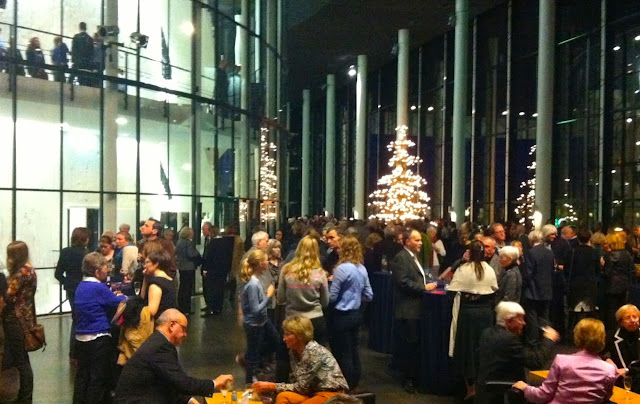 |
| From the top of the Ruhr Museum, you can still see some smokestack industry nearby. |
The Ruhr region (Ruhrgebiet) includes a vast area in the Rhine and Ruhr river valleys that has been the industrial heart of Germany.
The Allies bombed the heck out of the Ruhr in World War II, and three-fourths of Gelsenkirchen, where Bridget's dance company has its home, was destroyed. The town of Essen next door housed the huge Krupp armaments and steel factories and was also heavily bombed.
Still, after the war, this area was rebuilt and continued to be a major industrial center focused on production of coal, coke and steel. The MusikTheater (photos here) where our daughter Bridget's ballet company performs, was completed in 1959 and was viewed as a symbol of the area's reconstruction.
 |
| Part of the old coal-processing plant that is now the Ruhr Museum. |
Along with Manchester, England, where I spent six months working a few years ago, the Ruhr was a center of the industrial revolution in the 18th and 19th centuries. Its development was driven by the fact that it sits atop thick veins of coal and is linked by the river highways of the Rhine, the Ruhr and the Lippe.
 |
| More of the old mining complex. |
A ballet about coal miners
So Bridget's newly created story ballet, "Russ" (Soot), which told the Cinderella story from the point of a stepsister wooed by a coal miner considered beneath her, struck a chord with the local people. That local setting may have been part of the reason it won Germany's Faust Prize for best choreography of 2013. Not wishing to miss a political opportunity, the mayor of Gelsenkirchen and the state's culture minister weighed in with praise of Bridget and the ballet.
The dance company in Gelsenkirchen is called the Ballett im Revier and draws from a wide area of the Ruhr, including Dortmund, Dusseldorf and Duisburg.
 |
| Dancers and friends at Christmas dinner. |


Thanks for sharing the story and the photos. Such a remarkable story! Your daughter is very imaginative and creative and hard-working!
ReplyDeletethank you, Maureen, and I agree on all counts!
DeleteSuch amazing mining photos you have shared, been great to be able to look through them. Brilliant post!!
ReplyDeleteThanks for sharing the information. That’s a awesome article you posted. I found the post very useful as well as interesting. I will come back to read some more.
ReplyDeletemining companies wyoming
that,s really good thanks for share :)
ReplyDeleteBallet business | \A\Rachel Withers